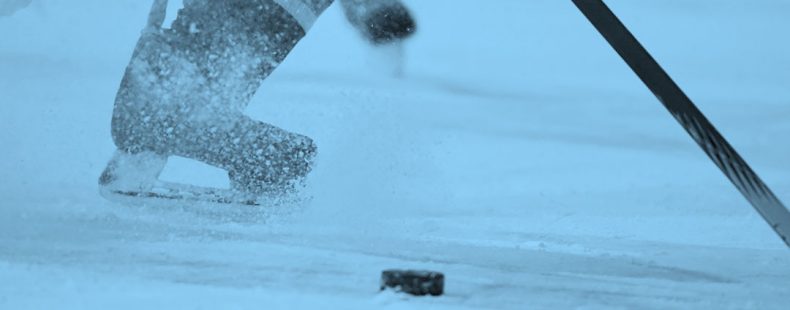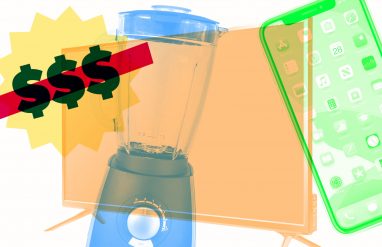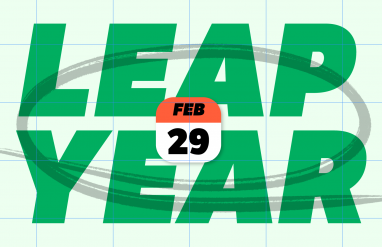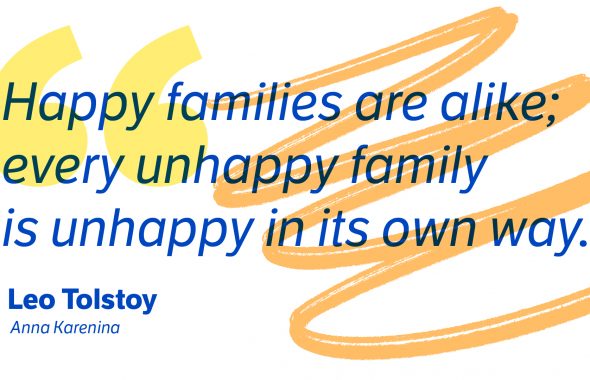Whether you were born with a stick in hand or only watch ice hockey during the battle for the Stanley Cup, there are plenty of terms to know during a game of hockey. You’ve likely heard of a slapshot, but can you define a gongshow? Do you know …
- What do you call a particularly tough goal?
- Who’s the duster in the game?
- Why is sieve considered an insult?
- Why is perfect flow important?
We’ve gathered up a glossary of terms you’ll hear during a hockey game. The list includes official terms as well as a penalty box full of fun slang terms. While this list will be helpful to people unfamiliar with hockey, even longtime fans might be reunited with a fun word they’ve forgotten. Without further delay, let’s put on our skates, grab a stick, and check out this list of hockey terms.
Learn about the Stanley Cup, hockey’s coveted trophy, here.
Hockey slang
- apple: An assist, or a pass or deflection that causes a teammate to score a goal.
- bender: A mocking term to refer to a player who bends their ankles while skating, which is a sign they don’t have proper skating technique.
- biscuit: The puck.
- celly: A celebration following a goal.
- chirp: To talk trash to opponents.
- clapper: A slapshot (see below).
- duster: A player who doesn’t see much gametime. Instead, they “collect dust” on the bench.
- flow: A hockey player’s hair.
- gongshow: An exciting hockey game. In particular, the term gongshow is often used to refer to a game with a lot of penalties, mistakes, and/or fights.
- pylon: A defending player who doesn’t move much.
- sieve: A goaltender that allows a lot of goals.
- top shelf: The area in the goal below the top crossbar and above the goalie’s shoulders. This area and shots made within it are also referred to as cheese or top cheese. A top shelf goal is particularly difficult to make successfully, so it is considered to be an impressive feat.
The positions and players
In a game of hockey, all of the players on a team—barring one—are allowed to skate all over the ice. During a game, players will often switch places and go wherever they can be most helpful to the team at the current moment. That being said, there are still six particular positions that are commonly recognized in a game of hockey. These are:
- center: This player begins in the middle of the rink and handles faceoffs. The center usually plays offense, but centers may switch to a defensive role if needed.
- right and left wing: The wings, also called wingers, line up to the left and right of the center. These two players typically mostly play offense with the center. Because of this, the wings and the center are also often referred to as forwards.
- right and left defense: As their names suggest, the defensemen or defensewomen typically stay back and help defend the goal or recover rebounds. At times, one or both of the defense may move up to shift to offense. This is especially likely to happen during power plays when the team has a player advantage.
- goaltender: The goaltender, commonly called a goalie, typically stays close to the goal and prevents the puck from entering the goal for a score. The goaltender wears different equipment from other players and has different rules about touching and grabbing the puck.
The game
- assist: A player is credited with an assist if their pass or deflection causes a teammate to score a goal. If multiple players pass the puck to each other before scoring, all of the contributing players are credited with an assist.
- breakaway: A situation in which the player with the puck only has the goaltender stopping them from scoring a goal.
- check: A general term for when a player makes contact with a player with the puck in order to try to disrupt their play or cause a turnover. Checking can often involve violent crashes or a player being slammed against the boards. According to the checking rules, contact above the shoulders is not allowed.
🏒 Did you know ... ?
The term body check is used to refer to a check in general. Other terms, such as hip check or shoulder check, are used to refer to how one player specifically checks another.
- deke: A feint maneuver in which a player gets an opponent out of position so they can get by them. Typically, a deke is performed by feinting to one direction before quickly moving in another. The word dangle is also used to refer to a fake out, and a deke is one kind of dangle.
- face-off: The moment when play begins or resets, signaled by the referee dropping the puck between the sticks of the two centers (typically) in the middle of the rink.
- hand pass: A situation in which a player uses their hand to stop or catch the puck in midair to halt its momentum. A player is only allowed to do this in their defensive zone, otherwise play is stopped and reset with a face-off.
- hat trick: A situation in which one player scores three goals in a single game. When a hat trick occurs, excited fans will often throw their hats on to the rink.
- own goal: When a play accidentally causes the puck to enter their own goal, giving a point to the other team.
- power play: A situation in which one team has a player advantage over the other due to an opposing player being sent to the penalty box. Teams will often capitalize on this advantage by aggressively playing more offensively.
- rebound: When the puck remains in play after bouncing off the goalie, another player, the goal, or the boards.
- save: When the goalie prevents the puck from entering the net.
- saucer pass: A pass in which one player sails the puck into the air, like a saucer, to a teammate.
- slapshot: A violent and powerful shot in which a player winds up the stick at or above the shoulders before making contact. In a slapshot, the stick slaps the ice and bends before hitting the puck, which causes a large amount of force to send the puck moving very fast.
The ice rink
- ice rink: The frozen water or artificial ice on which a game of ice hockey is played.
- boards: The walls or surfaces surrounding the rink that keep the puck in play.
- center ice: The middle of the rink where the initial face-off occurs.
- face-off circles: Four red circles—two on each side of the rink—in which face-offs are performed following a play stoppage.
- goal cages: The structures located at the ends of the rink. Players must place the puck within the goal cages in order to score goals.
- penalty box: A box located near a team’s bench. A player who commits a penalty must leave the rink and remain in the penalty box for a period of time depending on the penalty they committed. It is possible for multiple players to be in the penalty box at the same time.
- red line: The line splitting the rink in half at the center.
- blue lines: The two lines located on either side of the red line. The blue lines divide the rink into three zones: the defensive zone, the neutral zone, and the offensive zone. The defensive and offensive zone depend on which team is currently on offense.
- slot: The area of the rink located directly in front of a goal between the two face-off circles. Because shots taken in the slot are less likely to be performed at an angle or deflected, the slot is the area where a shot is most likely to be successful.
- wings: The left and right sides of the rink where the wingers typically play.
Make a breakaway to the quiz
Now that you’ve become a pro at hockey vocabulary, keep your training up by visiting our word list. You’ll be able to practice with flashcards, spelling quizzes and more. Then, go for the hat trick by scoring on our hockey quiz, followed of course with a energized celly.














